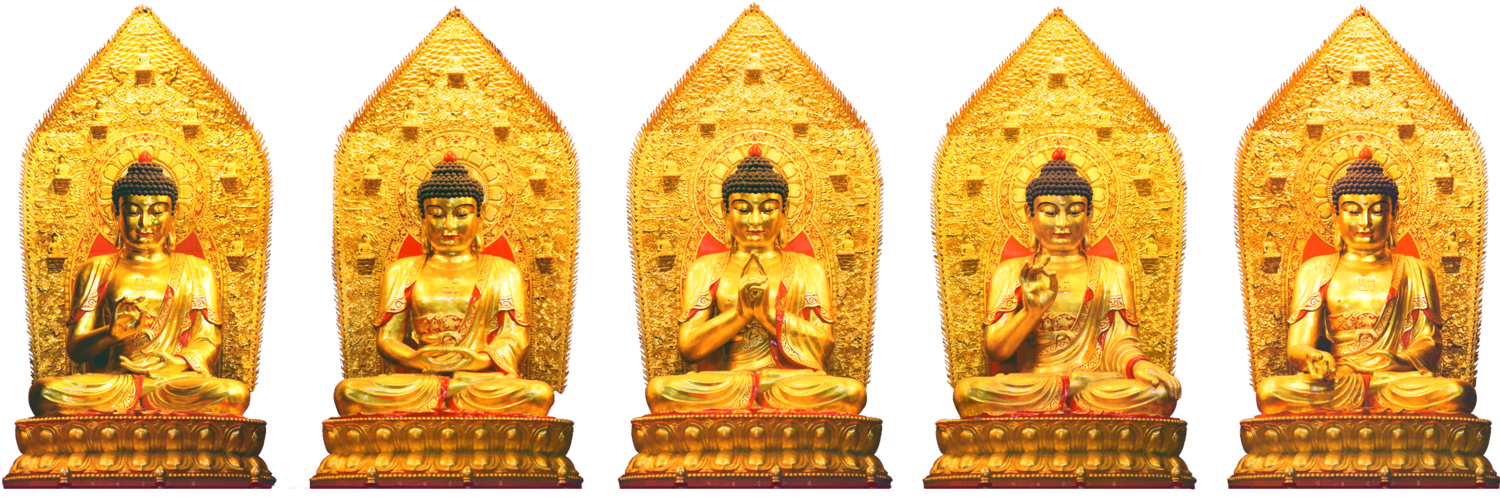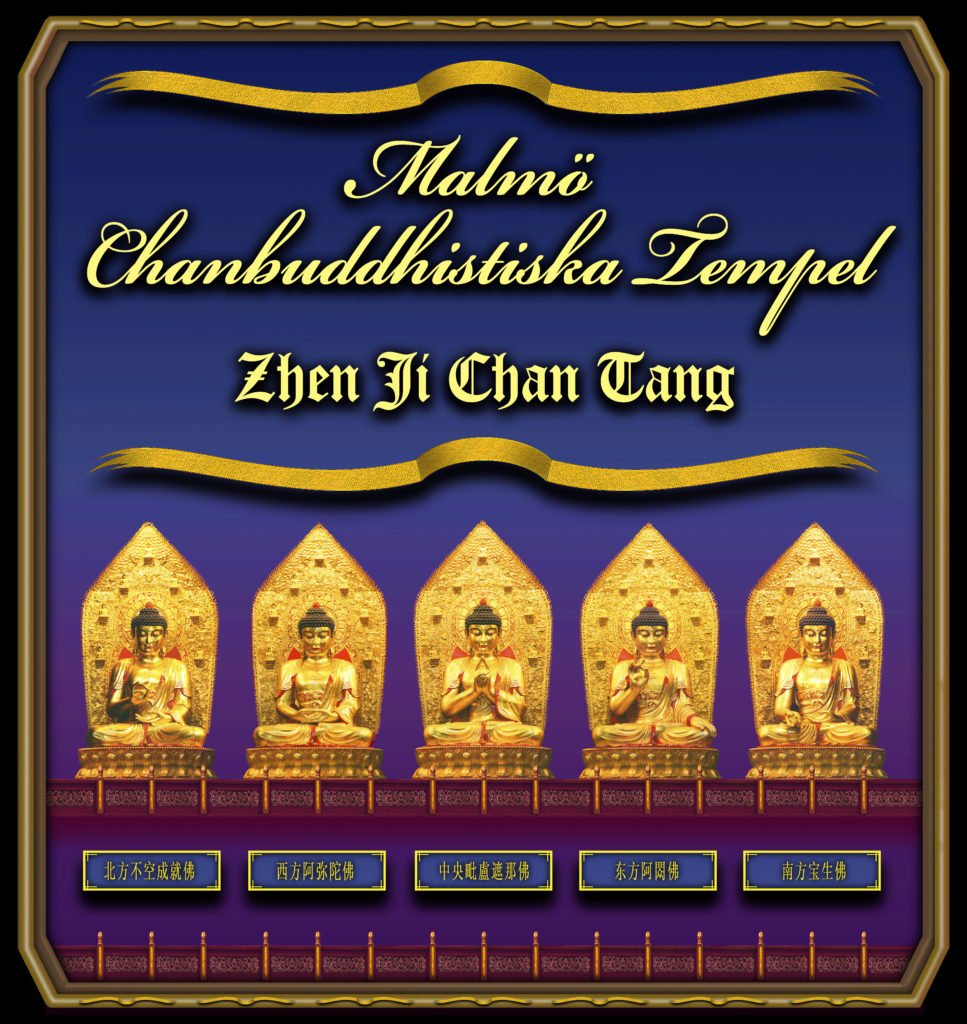On Ming Bao
明寳崇俉 Míng-Bǎo Chóng-Wù Treasure of Light Awakening by Worship
Míng-Bǎo was born to Danish immigrants as Johnny Petersen in the Småland district of Sweden. Due to some other-worldly experiences in his youth Míng-Bǎo turned to Buddhism to find explanations. He tells:
-“In the heart sutra vi read that the real and one mind neither has form nor color, scent nor taste and so on, i.e. there is nothing to grab on to, no clinging possibilities. Here is a recollection of such an experience:
In 1975, two good friends and dharma bums spend their summer in Denmark - the home of pastries and Hamlet - in the middle of an island called Fyn. They rented a former farm lodge with their families and by the time the women and children where going to bed these two fellows went out into the midsummer night. By midnight they settled down on a hill overlooking the near countryside. As Indian Sadhus they spread out their rugs, stuck the stick into the ground, lit some incense and found themselves a power spot where they could merge with the earth.
After a couple of hours of deep meditation, breathing with the earth they slowly turned towards each other and happens to fix each others gaze. After some time, gazing into each other they both slowly begin to realize that the other one is breaking through the outer shield of personality, the mask we carry in our daily life. "Hm, far out" they both thought, "but that sucker is not going to penetrate me any deeper than this." "Sucker?" the other one thinks. "Shit, he can see what is going on in my mind," the first one realises. And on it goes, piece by piece, layer by layer, like peeling on onion. And repeatedly they each come to the point where they try to resist the opening of the secret doors in the inner part of their mind. And again, there is nothing whatsoever to do about it, other than turning away from the gaze - and that, of course, is out of question.
The outer layers might be alright for someone to peep into, but after that it becomes more delicate. We all carry on characteristics we don't want anyone to admit but no less is painfully aware of. The experience that someone is revealing these sides merely by looking into you is not comfortable and one tries to resist as long as possible.
So on it goes until there is nothing whatsoever left to hide, nor nowhere to hide it, because you feel like the skull has dissolved bit by bit, looking like a painting by Salvador Dalí, until there is absolutely nothing left.
Then something unexpected happens: your whole being, your whole existence is lifting, lewelling and lighting up; you feel how that what you usually considers as your ‘self' is merging with everything around you, how it becomes an integrated part of existence instead of something separate as it used to be. Now is the time when one realises that the only thing existent is the collective, original and universal Mind.
After a while the sun is rising over the horizon and slowly the rural landscape is awakening to life. The friends look around themselves and discover they have been sitting in the middle of turnip-field, like other plants.... Ignorant of the miracle on the hill a rooster crows in a sleepy tone, a chain-dog answers, a door is slammed and on the winding road a milk-truck is moving on. The temperature is rising and newborn the friends, now closer than ever, is walking homeward to the lodge that is their temporary home and to humbly enjoy the breakfast that their caring women has prepared for their home coming 'brave dharma-warriors'.”
After returning to his hometown of Malmö in Southern Sweden, still deeply affected by the experience, he begins his search for answers. But there is no Buddhism to be found and nothing much else he tells. Someone told him that north of Copenhagen there’s a Tibetan Temple so he goes there and joins Lama Ole Nydahl for a year. But not satisfied he looks further and suddenly finds a small group of people meeting up every second Monday in a tine basement room. The group is headed by Upasaka Tao Míng who was a disciple of Dharma Master Tao Wei in Gothenburg. At the first possible occasion Johnny, now 25, asked to become his disciple. Accepted he now had to travel back and forth to Gothenburg to receive teachings. These teachings consisted only in Theravada as DM Tao Wei had the strong opinion that if one didn’t master these first hand then one would not be able to understand the more lofty teachings of the Mahayana. DM Tao Wei had been a monk in China between 1930 – 1936. In 1975 he went to HongKong to reordinate in the TienTai Tradition. After four years of intense study Johnny was asked to take refuge in 1979 and he then received the Dharma name Tao Chúan and was appointed Dharma Heir of DM Tao Wei. As Tao Chúan didn’t find any answers in the Theravada teachings he began read about the Japanese Zen tradition. (There were no information on Chinese Chán available at the time). Sadly enough, this fact raised an anger in DM Tao Wei and shortly before his untimely death in cancer in 1983 he made it clear that he could not be the teacher of Tao Chúan any longer.
After trying out a wordly career for ten odd years Tao Chúan returned to his Buddhist studies in 1996, this time returning to Zen. After a while he found the Chinese/American Zen Buddhist Order of Hsu Yun at the internet and became one of the early members. Dissapointed with some of the ideas of that group (US gun law), he looked further. In England there lived an Austrian Nun who had been trained in a Japanese temple for twelve year. She, The Ven. Myokyo-Ni had been a good friend of DM Tao Wei, so Tao Chúan was welcomed to her training center in Luton, GB. Still not satisfied Tao Chúan looked further.
Soon he found the Ven. Chán Master Ming Qi in Geneva and she invited him to come to “her” monastery in China, the Bailin Chán Sí. Exciting Tao Chúan thougt. On his way there he payed a visit to the monastery of the Sixth Patriarch, Hui Neng. The encounter with his mummy was overwhelming. It was, Tao Míng recalls, as if Hui Neng actually was in the room. Tao Chúan had to come back to days in a row and it was the same reaction every time. He just fell down, prostrating to the floor with tears in his eyes. At last he had found what he was looking for.
When he arrived at Bailin it felt like coming home. Nothing felt strange. After a few days the pair got to see The Ven. Grand Master Jíng Huí. Upon meeting him Tao Chúan emediately prostrated to floor again, finally having met his master. After being presented by Míng Qí, GM Jíng Huí and Tao Chúan looked at one another and cought each others gaze. Time stopped. The room disappeared. After a while – a second, an hour – who knows, they both nodded their heads and it was decided that Tao Chúan should ordain as Shami (Shamanera). The ceremony took place three days later. At the end, now dubbed Míng Bǎo, the Master acknowledged Míng Bǎo by presenting him the traditional horse tail fly whisk, the Fuzi 拂子, making him a Dharma Master.
Míng Bǎo went back to Malmö and established a meditation group that later developed into Ruì Diǎn Nán Chán/Southern Chánbuddhism in Sweden and The Buddhist Society Tao Zen, as well as affiliations in Gothenburg and Kalmar.
After six years, due to circumstances and for practical reasons, after seing GM Jíng Huí a last time (he passed away in 2013), Míng Bǎo decided in September 2010 to leave the monastic sangha and go on teaching as a layman, Upasaka.

